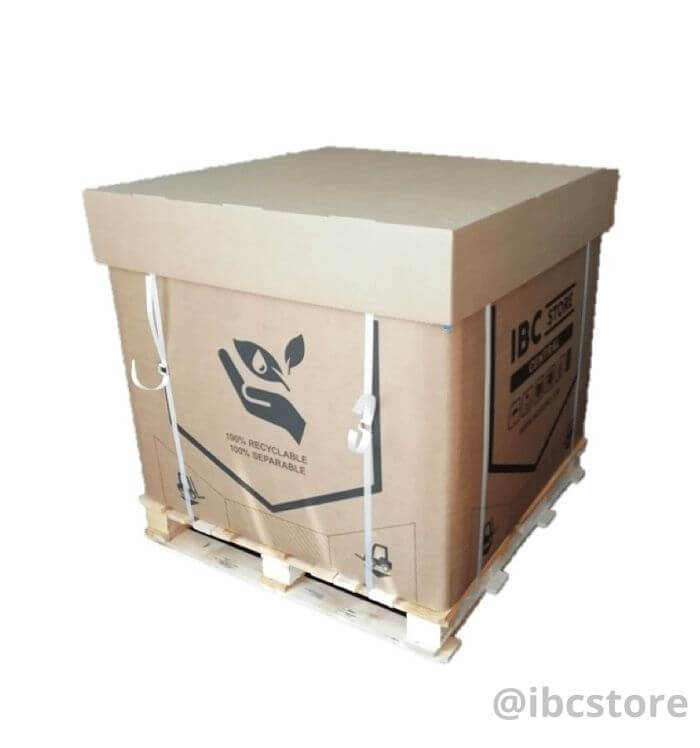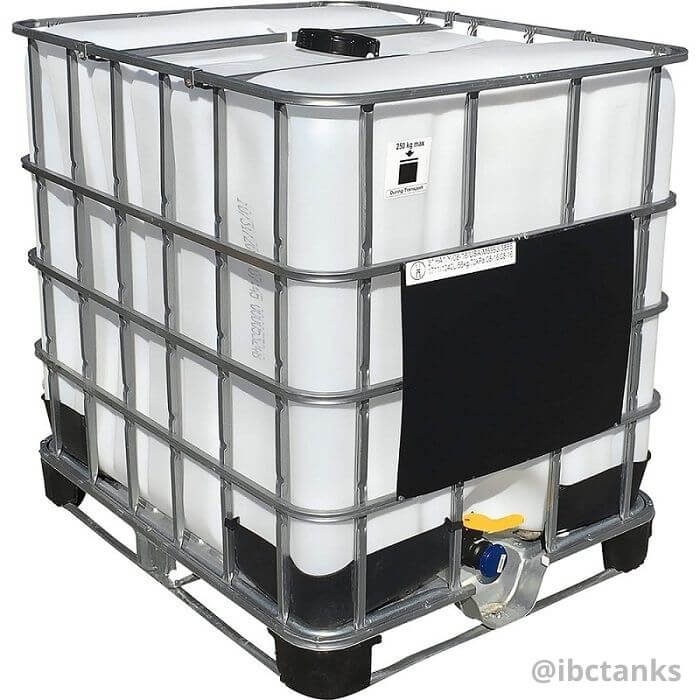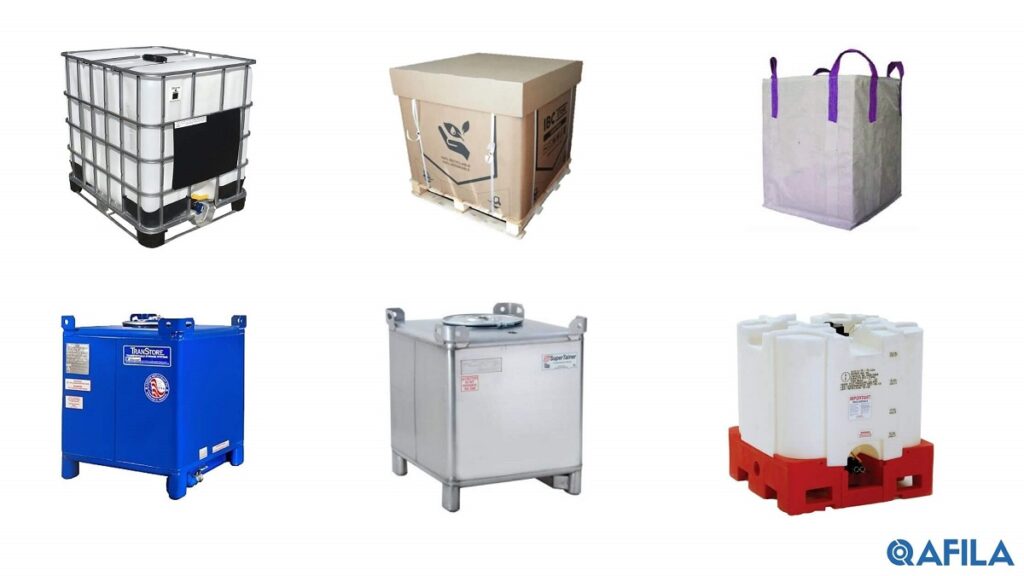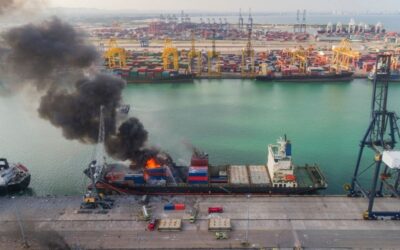Intermediate Bulk Containers: A Guide to Types, Dimension & Specifications
Having multiple benefits, the Intermediate Bulk Containers are reusable and serve multiple industrial purposes. IBC stands for Intermediate Bulk Container, are produced across a volume range that is in the middle of that of standard delivery drums and intermodal tank holders; that is where they get their name from, i.e., ‘intermediate’ bulk containers.
They are specifically designed for mass management, transportation, and storing fluids, semi-solids, solids, and pastes, etc. IBC (Intermediate Bulk Containers) totes are generally made from Polyethylene, Carbon, or stainless Steel or are a composition of both. They are known by multiple names:
- IBC Tote
- IBC Tank
- Pallet Tank
IBC Container prices can go from $180 up to $3,000 USD and are based upon and vary with the IBC model and its gallon limit.
Table of Contents
Construction:
IBCs come in a variety of sizes ranging from 110 to 550 gallons. Among them, the most common are 275 and 330 gallons.
IBC containers have inbuilt fixed pallet bases that include
- Forklifts
- Pallet jack channels with mobility access for either of the following
- 2-way movement
- 3-way movement
- 4-way movement.
The degree of access to the tools and hardware fluctuates with the IBC model. The table below reviews the variation in portability by IBC model:
| 2-Way Pallet Jack | 4-Way Forklift | Standard Square Stackable, Premium, Wide mouth IBCs |
| 3-Way Pallet Jack | 3-Way Forklift | Carbon Steel, Stainless Steel IBCs |
| 4-Way Pallet Jack | 4-Way Forklift | Caged IBC Totes, HDPE IBCs |
The standard measurements of IBCs are generally 45″L x 45″W around the world. They have in-built pallet and forklift access and stacking abilities. IBCs are convenient for the transportation of both fluid and solid materials.
Also Read
| Open Top Container | Hard Top Container |
| Platform Container | Insulated Shipping |
| Reefer Container | Flat Rack Container |
| Pallet Wide Container | Ventilated Container |
| Dry Container | Tank Container |
Types:
The three broad types of IBCs in use today can be classified under the following groups:
Cardboard IBC tanks
Cardboard IBC containers are usually made up of rigid cardboard without any need for a cooling system. Their unique features make them

- Maintainable
- Stackable
- Foldable holders.
Rigid IBC tanks
Rigid IBC containers are generally made up of plastic or steel or from a composite combination of the two materials. Rigid IBC holders require a pooling framework to dispatch the IBC’s from processing manufacturing plants to clients and vice versa.

Their unique features make them
- Reusable
- Stackable
- Non-foldable holder
Rigid IBC containers require a pooling framework to dispatch the IBC’s from a processing plant to the client and back once more.
They have a fixed pallet base mount that gives forklift or pallet jack mobility. IBC tank limits commonly have a volume capacity of 1,040 and 1,250 liters.
Flexible IBC tanks
FIBCs are often made of thick polypropylene; other materials can include
- Fiberboard
- Wood
- Aluminum.
The big bags are often operated by forklift trucks, cranes, or hoists when filled. They are lifted through ropes/loops, which are fastened to the bags.
FIBC containers are also known as Bulk Bag, Big Bag, or Tote, usually designed to ship and store dry solids without any need for further packing. These items may include
- Sand
- Granules
- Plastics.
- Powder
- flakes
The amazing thing about the FIBCc is that you can customize the measurements, management, filling, releasing, and barrier according to your needs.
FIBCs ordinarily hold somewhere in the range of 500 to 2000 kg weight of the goods in them and have the volume capacity of 285–2,830 liters.
The other common types include:
| Container type | Composition of the body | Contact with products | Collapsible/ non-collapsible |
| Metal IBC | metal commonly steel or aluminum | direct or through an internal liner | collapsible if it’s empty |
| Flexible IBC | made of woven texture, plastics or paper | direct or through an internal liner | collapsible if it’s empty |
| Rigid Plastic IBC | plastics | direct or through an internal liner | Rigid whether it’s filled or empty |
| Composite IBC | structural equipment in the form of a rigid outer casing forming a single unit | direct or through an internal liner | rigid, semi-rigid or flexible but does not directly take the stresses of distribution. |
| Fibreboard IBC | fibreboard | direct or through an internal liner | Rigid whether it’s filled or empty |
| Wooden IBC | sawn timber or wood panels such as plywood or reconstituted wood | direct or through an internal liner | Rigid whether it’s filled or empty |
Why We Need Intermediate Bulk Containers?
IBCs are very efficient to securely transport various products. Cube molded rigid IBCs frequently have a standard impression of 48″x40″. It serves many purposes, including simple transportation because of its being a typical pallet size in North America and different countries.
A hose can be joined with a tap or valve at the base of the container to permit the transfer of substance into smaller holders for efficient and easy
- Packing
- Transit
- Distribution
- Sale.
For shipping or storage, cube-shaped rigid IBCs can be stacked for ideal utilization of space during transportation and capacity. Moreover, both collapsing and flexible IBCs utilize even less space once they are emptied.
Below we have discussed the most common types of IBCs and the reason to choose each one.
| The most common IBC Container type with respect to: | Unique Feature: | Why go for them: |
| Volume | 275 gallons and 330 gallons | Their similarity to 55-gallon drum-pallet sizes and volumes |
| Model | Composite Steel-caged poly totes | Lesser cost and more variety. |
| Material | HDPE or High-density polyethylene used in composite and all plastic | Reliability and compatibility. |
| Food Grade | Stainless steel metal IBCs | strict Cleanliness capabilities. |
Common Uses
Generally, IBCs are used for shipping and storing the following item
- Chemicals
- Liquids
- Drugs
- Solvents
- Food syrups
- Sand
- Grains
Common Heights of Intermediate Bulk Containers
IBCs have been designed with bases that keep up the container’s footprint and measurements inside a norm, acceptable worldwide sizes. IBCs come in various sizes ranging from 110 gallons up to 550 gallons while keeping up the IBC’s footprint details.
An average IBC base dimension is 1,143 mm × 1,143 mm. IBC tanks are capable of carrying equivalent volumes in less shipping space and in significantly less steps, both in terms of manufacturing and logistics. We have explained the space utilization comparison in the form of a table:
| 4 drums | 1 pallet |
| 1 IBC | 1 pallet |
| 1 275-gallon IBC | 5 drums |
| 5 drums | 1.25 pallets |
| 1 330-gallon IBC | 6 drums |
| 6 drums | 1.5 pallets |
Intermediate bulk containers are manufactured with various size dimensions as well as potential custom options. You can select from the IBCs option that best suits your individual requirements and shipping needs.
| IBC Type | Capacity | Dimensions |
| Poly Cage Composite | 275 up to 330 Gallons | 45″ x 40″ x 46″ to 48″ x 40″ x 53″ |
| High Density Polyethylene | 120 up to 550 Gallons | 45″ x 45″ x 36.5″ to 81″ x 48″ x 60″ |
| Carbon Steel | 110 up to 550 Gallons | 48″ x 40″ x 20″ to 48″ x 42″ x 71″ |
| Stainless Steel | 110 up to 550 Gallons | 48″ x 40″ x 20″ to 48″ x 42″ x 71″ |
Now let’s take a look at the volume
| IBC type | Capacity | IBCs in 53ft Truck | Total IBC Volume | Cubic Volume Total |
| Metal IBC Tanks | 250-350 Gal | 28 – 56 IBCs | 9,240– 14,000 Gallons | 1,960 – 2,287 Cu.Ft |
| Small Height IBCs | 110 to 250 gallons | 56 – 84 IBCs | 9,240-14,000 Gallons | 1,960 – 2,287 Cu.Ft. |
| Metal IBCs | 450-550 Gallon | 30 IBCs | 13,500–16,500 Gallons | 2,065 – 4,376 Cu.Ft. |
Dimensions
Most used standard pallet dimension are
| Length | Width | Height | Area |
| 48’’ | 48’’ | 50’’ | 13.3 sq.ft. |
Base Dimensions:
| Base Length | Base Width | Base Area |
| 45’’ | 45’’ | 14.06 sq.ft. |
What is the guidance for the storage of liquids in intermediate bulk containers?
NFPA 30 just allows three sorts of IBCs in industries, including
- Metal
- Rigid Plastic
- Composite.
Just fluids with a boiling point of 38 C (100 degrees F) or more are allowed to be put away in these holders. Moreover, the composite IBCs should be recorded and labeled.
What is the top Manufacturer of Intermediate Bulk Containers?
Schutz is one of the top international manufacturers of the IBC system. Schutz Ecobulk IBC offers quality services. Their efficient use of space and less weight brings maximum security and user-friendliness for your items.
How you can Use Intermediate Bulk Containers to Manage Cargo effectively?
Generally, IBCs have cube shapes, which does the packing, storing, and shipping very convenient. It also makes efficient use of the space inside the container.
Rigid IBC totes include fixed pallet bases with measurements that are for the most part close to the normal pallet standard element of
- 1,200 mm × 1,000 mm
- 1,219 mm × 1,067 mm
The IBC container pallet base facilitates mobility through forklift and pallet jack channels. Practically all rigid IBCs are planned so they can be stacked vertically, one on the other utilizing a forklift.
Mostly, the design of rigid IBC has an inherent tap, a valve, nozzle, or a fixture at the base of the container to which hoses can be joined.
IBC totes offer a minimal effort choice to a great extent proposed for one-time use in applications including shipping solvents, acids, caustics, cleansers, ag crop synthetics, and food industry items. They are also used for water storage.
HDPE IBCs are appropriate for transporting and storing synthetic substances, oil-based goods, water, and general perilous, non-dangerous materials.
The carbon steel IBC type is generally utilized for synthetic compounds, ointments, oils, and solvents. The hardened steel IBC model is all around utilized inside the food, refreshment, grape plantations, makeup, and drug businesses because of their serious cleanliness capacities.
IBCs bring more efficiency in transportation and packaging. Particularly when considering using different IBC tanks. Moreover, IBCs can be manufactured according to a customer’s exact needs in terms of space, measurements, and material.

Other Benefits
There are numerous benefits served by its unique design of the IBC model:
- Being cubic in structure, they can move more material in a similar impression in contrast to other containers and unquestionably more than may be sent in a similar space.
- Composite IBCs depend on plastic liners that can be filled and released with various frameworks.
- High association, portability, combination abilities.
- Better logistics services and dealing with timetables
- Increased reliability of IBC manufacturing materials.
- It gives a solid and predictable approach to deal with or store materials.
IBCs are regularly used to transport, handle, or potentially store:
- Mass synthetic compounds, including risky materials or perilous products
- Items and crude materials utilized in mechanical creation
- Fluid, granulated, and powdered food syrups, etc.





